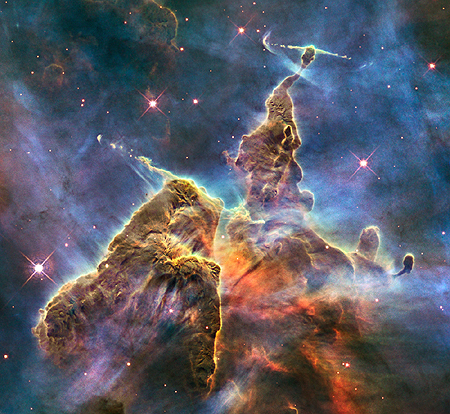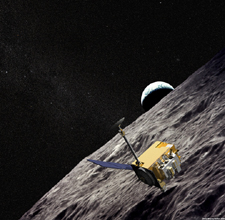Ancient civilizations assigned proper names to stars and constellations, names that were meaningful to them and marked events, seasons, time of the year, honored gods or leaders. It was a time when stars had a strong presence in our lives, provided guidance, inspiration and wonder. Name A Star Live gift sets represent the modern representation of a centuries old tradition of naming stars.
One of the questions we are asked by our customers is: “Can you officially name stars?” The short answer is, “No one can ‘officially’ name a star.” How is that so? And what value does Name A Star Live bring to the table?
Many astronomers argue that the “International Astronomical Union” (IAU) – an international organization of professional astronomers – is the only body that can ‘officially’ name stars, celestial bodies and their surface features. Few know that the IAU’s decisions are not enforceable by any national or international law.

By and large, most astronomers do follow the conventions and recommendations of the IAU regarding the naming of celestial objects. For example, in 1922 the IAU held a meeting in Rome where the organization agreed upon the names and boundaries of the 88 constellations (areas of the night sky) such as Taurus, Aries, Cancer, etc. Virtually all astronomers around the world follow the IAU’s definitions of the constellations — as does Name A Star Live!

On the other hand, in 2006 the IAU made a very controversial decision concerning the planet Pluto – a decision that has met considerable resistance among many astronomers. In the 1990s, astronomers began discovering numerous, small planetary objects (such as “dwarf planets”) in the outer reaches of the solar system. What’s more, in 2003 a planetary body larger than Pluto was discovered in the outer solar system as well. Astronomers began to worry that with the discovery of so many planetary bodies, the total number of “planets” in the solar system could grow so large as to make the term “planet” almost meaningless. So in 2006 the IAU created a strict definition of what constitutes a planet. Under this new definition, the IAU no longer considers Pluto to be a planet, and now states that the solar system has only eight planets, not nine.
Commenting on the IAU’s controversial Pluto decision, Professor Ron Ekers, past president of the IAU, admitted that the IAU’s decisions are not supported by the force of law. Quoting Professor Ekers from the IAU Web site, “Such decisions and recommendations are not enforceable by any national or international law; rather they establish conventions that are meant to help our understanding of astronomical objects and processes.”
Fair enough: There is a real need within the astronomical community for a common set of definitions and conventions so as to facilitate scientific discourse. But the point remains that the IAU’s decisions are not, in fact, “official” in any legal sense of the word.
Keith Cowing, the Editor-in-Chief of the prominent aerospace Web site “NASA Watch,” underscored this point when he recently wrote on his site:
If you had a chance to name this new moon [of Pluto] what would you name it – and why did you pick that name? Oh yea, the IAU claims to have a monopoly on naming objects and features in our solar system – and beyond. But there is nothing legally binding to the names they decide to use. Everyone just goes along with them because … well … because. And who gave them this role anyways? Answer: they appoint themselves. So why can’t the rest of us have a say in naming the things in our universe? The IAU is so 20th century. Its time to change this process.

Interestingly, other star-naming companies have tried to give the impression that their star names are official. Some of them have actually made that exact (false) claim. Some star-naming outfits – essentially trying to imply that they officially name stars – make a point of printing their customers’ star names in a copywritten book, perhaps which is stored in a vault. Of course, anyone can print a list of star names on pieces of paper, put a copyright symbol (©) on those pieces of paper, and store them in a bank safe deposit box. But that doesn’t make the star names official!
So if the IAU and star-naming companies cannot officially name stars, what value does Name A Star Live provide its customers?
Unlike the IAU and other star-naming companies, Name A Star Live makes the symbolic gesture of naming a star ‘real’ by:
- Launching our customers’ star names into space, thus making our customers part of real space missions. NASA does much the same thing when it offers members of the general public the opportunity to include their names on deep space missions.
- Providing our Virtual Planetarium™ astronomy/space software that was developed in collaboration with Rice University and the Houston Museum of Natural Science.
These real components of our star-naming service – in addition to our handsome Star Certificates and other documentation in our gift sets – set Name A Star Live apart, and provides meaningful value for our customers.
People around the world have been giving different names to stars for thousands of years. For example, over the centuries the North Star has been named Alruccabah, Cynosura, Lodestar, Pole Star, Navigatoria, Yilduz, Mismar, Dhruv, Hub of the Cosmos, the Steering Star, and the “star that does not walk.” Today’s astronomers refer to the North Star with such scientific names as “Polaris,” “TYC 4628-237-1,” “HD 8890,” and “HIP 11767,” to give just a few examples. None of these names are “official” from a legal perspective. You could just as legitimately refer to the North Star as “the beautiful star in the north that never moves,” “Betty,” “Ralph,” or any other name you so choose.
The point is, naming a star is a beautiful, romantic, symbolic gesture – something that makes for a meaningful gift. Name A Star Live – alone of all the star-naming companies – makes it real. Enjoy!